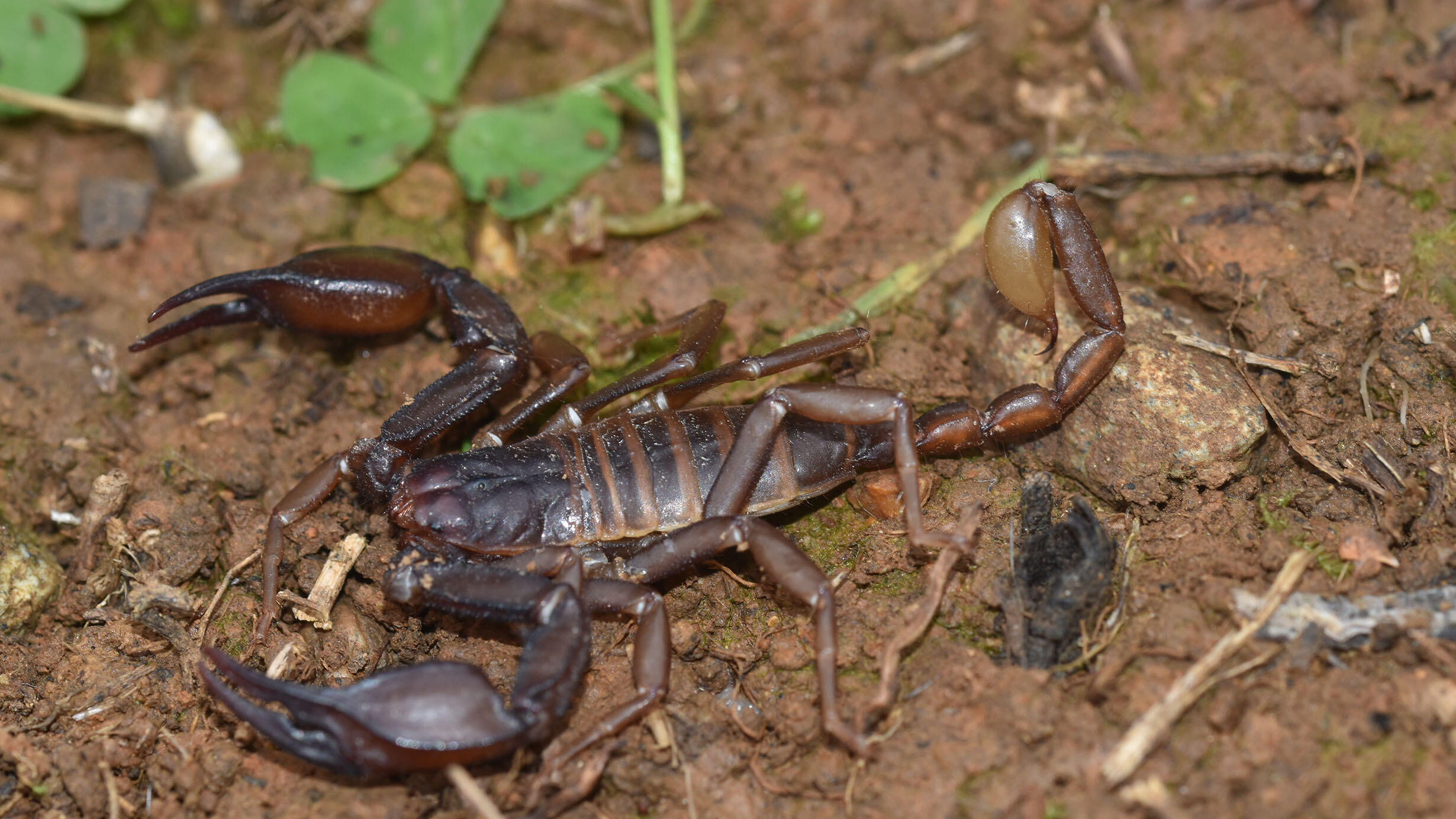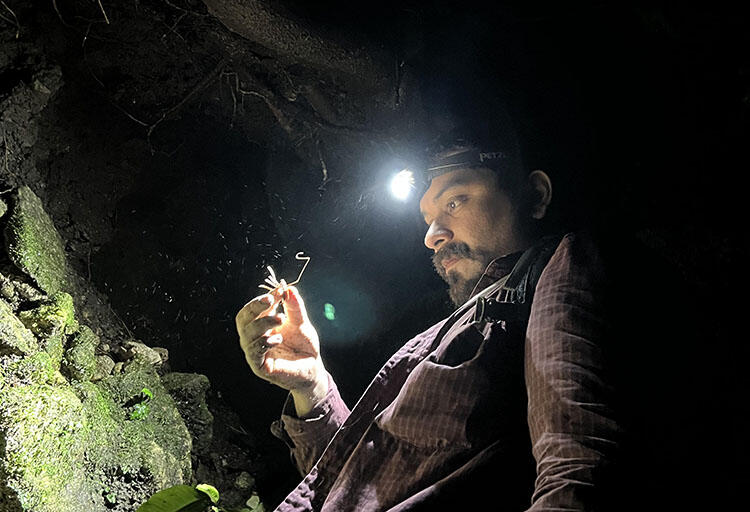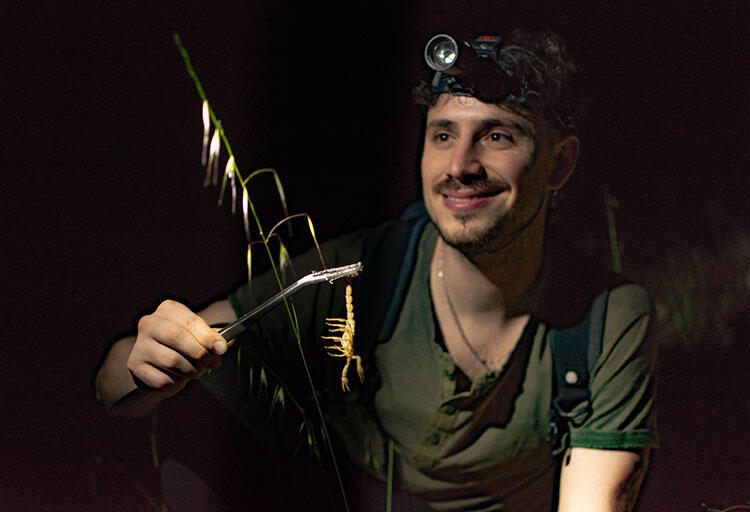 The newly described scorpion species, Euscorpius Olympus, which was discovered in the foothills of Mount Olympus in Greece.
The newly described scorpion species, Euscorpius Olympus, which was discovered in the foothills of Mount Olympus in Greece.© Javier Blasco-Aróstegui
Museum scientists have discovered and described two remarkable new arachnid species: a scorpion from Mount Olympus in Greece and a whip spider from several caves in northeastern Colombia. Both are biological “relicts,” representatives of ancient lineages that have been isolated in sheltered environments and remained almost unchanged for millions of years.
“Relictual species, remnants of once more diverse and widespread lineages or populations, now confined to small areas of hospitable habitat, help us understand how life adapted and persisted in the face of past changes to Earth’s climate,” said Lorenzo Prendini, curator in the Museum’s Division of Invertebrate Zoology.
Earlier this year, as part of a National Science Foundation grant on whip spiders and related arachnid orders, Prendini and Museum postdoctoral researcher Jairo Moreno-González described an eyeless, depigmented whip spider from caves in the Sierra Nevada of Santa Marta, an isolated mountain range in northeastern Colombia rich with indigenous folklore.
© Miguel A. Gutierrez
In the journal American Museum Novitates, the researchers named the new genus and species, which is just about 1 centimeter long, Jorottui ipuanai, after the Wayuu word “Joróttui,” which means “place where perennial clarity reigns” and “ipuanai,” honoring the late Wayuu linguist and writer Ramón Paz Ipuana. Jorottui ipuanai is only the second species of the family Paracharontidae, an ancient lineage that includes the oldest known whip spiders.
“The other species in this ancient family lives inside termite nests in West Africa and was discovered 100 years ago, but hasn’t been seen since,” Moreno-González said. “This new species is now the second in a family that represents the oldest branch on the whip spider tree of life and it’s key to understanding the evolution of these strange arachnids.”
 Museum postdoctoral researcher Jairo Moreno-González, the lead author on a recent study describing a new species of whip spider.
Museum postdoctoral researcher Jairo Moreno-González, the lead author on a recent study describing a new species of whip spider.© Jairo Moreno-González
 Ph.D. student Javier Blasco-Aróstegui from the University of Lisbon, Portugal, the lead author on a recent study describing a new species of scorpion.
Ph.D. student Javier Blasco-Aróstegui from the University of Lisbon, Portugal, the lead author on a recent study describing a new species of scorpion.© Yuri Simone
Last month, Prendini and Ph.D. student Javier Blasco-Aróstegui from the University of Lisbon, Portugal, described a different arachnid species: a scorpion from another area of the world also associated with mythological significance—Mount Olympus in Greece.
“Mount Olympus is not only famous for being home to Greek deities, but it’s an important biodiversity hotspot in Europe,” Blasco-Aróstegui said. “Mountains are often able to support a wide range of life because habitats can vary greatly with changing elevation.”
The new scorpion, which the researchers named Euscorpius olympus after the iconic massif, brings the total number of Euscorpius species recorded in Greece to 32.
The study, also published in American Museum Novitates, suggests that the new scorpion might have been isolated from other populations in the foothills of Mount Olympus during the last Ice Age, where it adapted over many years to its rocky, crevice habitat by evolving elongated appendages, including narrow and slender pincers.
“These amazing relictual arachnids not only reveal how much remains to be discovered, even in parts of the world thought to be relatively well-studied, but their survival over the millennia has implications for how organisms survive the effects of climate change, which will become increasingly important in the years ahead,” said Prendini.